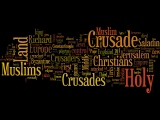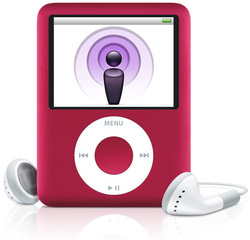
The topic for this week's blog entry is Wikis. At one time or another, every person has been to a Wiki. What is a Wiki you ask? Simply put, a Wiki is a website that was developed and edited collaboratively by a set of users. Some sites, like Wikipedia, allow any user in the world to access and change the information being displayed. However, other Wikis can be more selective and only allow an admin or registered users to make changes.
Wikis can be a great tool in the classroom. On my Wiki, I take my students through a 3 day adventure of the Middle Ages. During this adventure, my students will watch a video about a medieval peasant, take a quiz, explore another Wiki, and do other fun stuff. In doing so, I am attempting to meet both the state technology standards (discuss the ways technology is linked to creativity and innovation) and the state Social Studies standards.
The alternate Wiki that I sent my students to is an online textbook. This online textbook shows the full value of using a Wiki in the classroom. Students can expand on the Wiki by adding pages or lengthening articles. Wikis also support discussion features so that students can discuss what they want to do with the page. Lastly, Wikis have a history button. This allows me to see all the students who made changes to a page and what type of contribution they made.It can clearly be seen that the value of a Wiki is its ability to expand knowledge and allow many students to collaborate. This can also be a fun activity to break the "every day monotony" of a classroom. My only criticism of Wikis in the classroom would be time restraints. I feel that any Wiki worth doing (that is, one of quality and allows the students to gain something from the experience) may possibly take too much time.
Ultimately, it is my hope that the collaborative effort of Wikis will allow my students (and others) to learn new information in a much easier, more creative, and much more fun way.
Wikis can be a great tool in the classroom. On my Wiki, I take my students through a 3 day adventure of the Middle Ages. During this adventure, my students will watch a video about a medieval peasant, take a quiz, explore another Wiki, and do other fun stuff. In doing so, I am attempting to meet both the state technology standards (discuss the ways technology is linked to creativity and innovation) and the state Social Studies standards.
The alternate Wiki that I sent my students to is an online textbook. This online textbook shows the full value of using a Wiki in the classroom. Students can expand on the Wiki by adding pages or lengthening articles. Wikis also support discussion features so that students can discuss what they want to do with the page. Lastly, Wikis have a history button. This allows me to see all the students who made changes to a page and what type of contribution they made.It can clearly be seen that the value of a Wiki is its ability to expand knowledge and allow many students to collaborate. This can also be a fun activity to break the "every day monotony" of a classroom. My only criticism of Wikis in the classroom would be time restraints. I feel that any Wiki worth doing (that is, one of quality and allows the students to gain something from the experience) may possibly take too much time.
Ultimately, it is my hope that the collaborative effort of Wikis will allow my students (and others) to learn new information in a much easier, more creative, and much more fun way.

